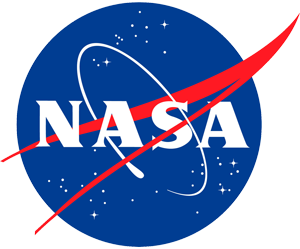NAMMA MODIS/AQUA and MODIS/TERRA Deep Blue Products
Table of Contents
Introduction
A new satellite aerosol algorithm, called Deep Blue, utilizes blue-wavelength radiance measurements from the MODIS instrument to infer the properties of aerosols, since the surface reflectance over land in the blue part of the spectrum is much lower than for longer wavelength channels. The Deep Blue team has provided three distinct types of data and browse products that cover the NAMMA region:
- RGB images generated from MODIS/AQUA and MODIS/TERRA datasets over the NAMMA region.
- Gridded Angstrom Exponent data over the NAMMA region, generated from both MODIS/AQUA and MODIS/TERRA instruments.
- Gridded Aerosol Optical Depth data over the NAMMA region, generated from both MODIS/AQUA and MODIS/TERRA instruments.
Campaign
These data files were generated during support of the NASA African Monsoon Multidisciplinary Analyses (NAMMA) campaign, a field research investigation sponsored by the Science Mission Directorate of the National Aeronautics and Space Administration (NASA). This mission was based in the Cape Verde Islands, 350 miles off the coast of Senegal in west Africa. Commencing in August 2006, NASA scientists employed surface observation networks and aircraft to characterize the evolution and structure of African Easterly Waves (AEWs) and Mesoscale Convective Systems over continental western Africa, and their associated impacts on regional water and energy budgets. For more information about the NAMMA Campaign, go to the NAMMA web site: http://namma.nsstc.nasa.gov/
Product Description
RGB images
These are RGB browse images generated from both MODIS/AQUA and MODIA/TERRA datasets over the NAMMA region. These images are in JPEG format. Gridded Angstrom Exponent
These data files are Gridded Angstrom Exponent data over the NAMMA region, generated from both MODIS/AQUA and MODIS/TERRA instruments. These data are presented in both GIF and ASCII format. The gridsize is 0.1 degrees by 0.1 degrees, running from -50 to +10 longitude, -5 to +30 latitude. Files are recorded in bands of equal latitude, West to East, with the bands laid down South to North. In other words, the first number in the file will be the Angstrom Exponent at gridpoint -50 longitude, -5 latitude, and the last point in the file will be for gridpoint +10 longitude, +30 latitude. For example, DIMENSION alpha(600,350) (where the 1st index is lon and 2nd index, i.e., alpha(lon,lat)) DIMENSION XLAT(350), XLON(600) where XLAT starts at 4.95 S, and then 4.85S, 4.75S,..., 29.95N XLON starts at 49.95 W, and then 49.85W, 49.75W,..., 9.95E. Gridded Aerosol Optical Depth
These data files are Gridded Aerosol Optical Depth data over the NAMMA region, generated from both MODIS/AQUA and MODIS/TERRA instruments. These data are presented in both GIF and ASCII format. The gridsize is 0.1 degrees by 0.1 degrees, running from -50 to +10 longitude, -5 to +30 latitude. Files are recorded in bands of equal latitude, West to East, with the bands laid down South to North. In other words, the first number in the file will be the Aerosol Optical Depth at gridpoint -50 longitude, -5 latitude, and the last point in the file will be for gridpoint +10 longitude, +30 latitude. For example, DIMENSION AOT(600,350) (where the 1st index is lon and 2nd index, i.e., AOT(lon,lat)) DIMENSION XLAT(350), XLON(600) Where XLAT starts at 4.95 S, and then 4.85S, 4.75S,..., 29.95N XLON starts at 49.95 W, and then 49.85W, 49.75W,..., 9.95E. Please note that for TERRA, the Aerosol Optical Depth is given at 470nm, while for AQUA it is given at 550nm. File Naming Convention
The example data files shown below are available for each day of the campaign, starting on August 13, 2006 and ending on September 30, 2006:
namma_aqua_yyyymmdd_DeepBlue_GriddedAerosolOpticalDepth550nm.asc namma_aqua_yyyymmdd_DeepBlue_GriddedAerosolOpticalDepth550nm.gif namma_terra_yyyymmdd_DeepBlue_GriddedAerosolOpticalDepth470nm.asc
namma_terra_yyyymmdd_DeepBlue_GriddedAerosolOpticalDepth470nm.gif
namma_<sat>_yyyymmdd_DeepBlue_GriddedAngstromExponent.asc namma_<sat>_yyyymmdd_DeepBlue_GriddedAngstromExponent.gif
namma_<sat>_yyyymmdd_MODIS_RGB.jpg
where,
namma = the campaign name
sat = satellite name (aqua or terra)
yyyymmdd = the year, month and day
DeepBlue = algorithm used
GriddedAerosolOpticalDepth = data type
GriddedAngstromExponent = data type
MODIS_RGB = browse type
asc = tab delimited ASCII data files
gif = Graphics Interchange Format
jpg = Joint Photographic Experts Group Format
Data Format
The Gridded Aerosol Optical Depth data and the Gridded Angstrom Exponent data are both in tab delimited ASCII format, while their browse counterparts are in gif (Graphics Interchange Format) format. The RGB browse files are in jpg (jpeg - Joint Photographic Experts Group) format.
References
\bibitem[Hsu et al.(2006)]{2006AGUFM.A24C..04H} Hsu, N., Tsay, S., Jeong, M., \& Holben, B.\ 2006, AGU Fall Meeting Abstracts, 4
Hsu, N. C., S. C. Tsay, M. D. King, and J. R. Herman, (2006). Deep blue retrievals of Asian aerosol properties during ACE-Asia. IEEE Transactions on Geoscience and Remote Sensing, 44, 3180-3195.
Hsu, N. C., S. C. Tsay, M. D. King, and J. R. Herman, 2004: Aerosol properties over bright-reflecting source regions. IEEE Trans. Geosci. Remote Sens., 42, 557-569.
Contact Information
The data producer is:
Jeremy Warner
jeremy_warner@ssaihq.com
To order these data or for further information, please contact:
Global Hydrology Resource Center
User Services
320 Sparkman Drive
Huntsville, AL 35805
Phone: 256-961-7932
E-mail: support-ghrc@earthdata.nasa.gov
Web: http://ghrc.nsstc.nasa.gov/
|

